EYES
Treating Dark Circles
Dr Rita Nandi shares a case study of combining HA and Sunekos 200 to tackle under-eye concerns
Eye bags and dark circles can affect all genders and ages, leading to high demand for treatment. While there are a number of effective tools available, I have found combining HA with injectable treatment Sunekos 200 particularly successful. Here I present a case study.
PATIENT OVERVIEW
A 23-year-old female patient came to see me in August last year, complaining of dark circles and hollowing under her eyes. She explained that people often commented that she looked unwell and asked her if everything was ok. My patient understandably found this frustrating and embarrassing to deal with.
She was fit and well, not on any regular medication, had no known allergies and had no previous injectable treatments. She had good lateral and anterior cheek projection.
TREATMENT
My proposed treatment plan consisted of medical-grade skincare to use at home, followed by tear trough filler, using Redensity 2 hyaluronic acid.
Despite my efforts to persuade her of the benefits, my patient opted not to use medical-grade eye cream, so was just using medical-grade products for her face. The tear trough filler was administered and then reviewed at four weeks.
At this review, the patient was noted to have significantly improved hollowing, however, her pigmentation was still present. I therefore suggested three sessions using Sunekos 200, using their proprietary technique for ‘dark eye circles and bags’. This technique aims to stimulate the production of new extra-cellular matrix (ECM), resulting in thicker skin in the under-eye area. The increased elastin can contribute to an improved appearance of eye bags.
Due to the patient having other commitments, the treatment was started four weeks later. A fourth session was later carried out due to the severity of her dark circles.
When treating the periocular area with Sunekos 200, three sessions are usually advised with each session spaced 14 days apart. To help preserve results, Nutrakos Gel Eye Contour is recommended.
It is common for patients to see some improvement after the first session, while three treatment sessions can last up to six months.
Each treatment session involves injecting the medium-deep dermis at the points shown in Figure 1. There are two supraperiosteal boluses within Zone B, consisting of 0.2mls each (orange dots in Figure 1) and the rest of the periocular injection points involve around 0.1ml being placed very superficially, parallel to the skin (yellow dots in Zone A in Figure 1).
The practitioner should take care to avoid any veins and should reduce the number of injection points if there are many visible vessels in the area. It is important not to hit the orbital septum when carrying out injection points in Zone A (please refer to Figure 2), which is why injections should be carried out very superficially and parallel to the skin.
There is minimal pain on injection, however, the patient can have numbing cream applied to the skin beforehand if they wish. Downtime is minimal and the patient can resume their day as normal, as long as they keep their face clean and avoid touching the injected areas for the rest of the day.
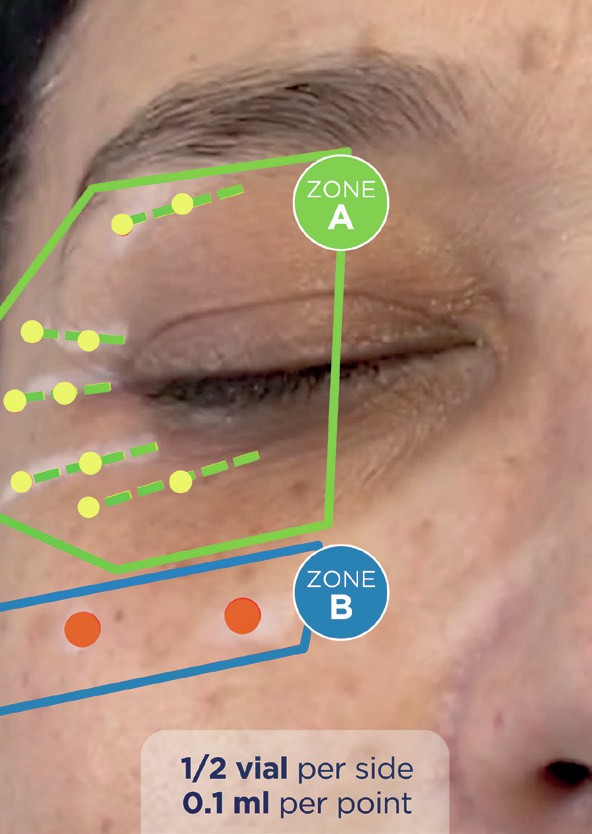
Figure 1
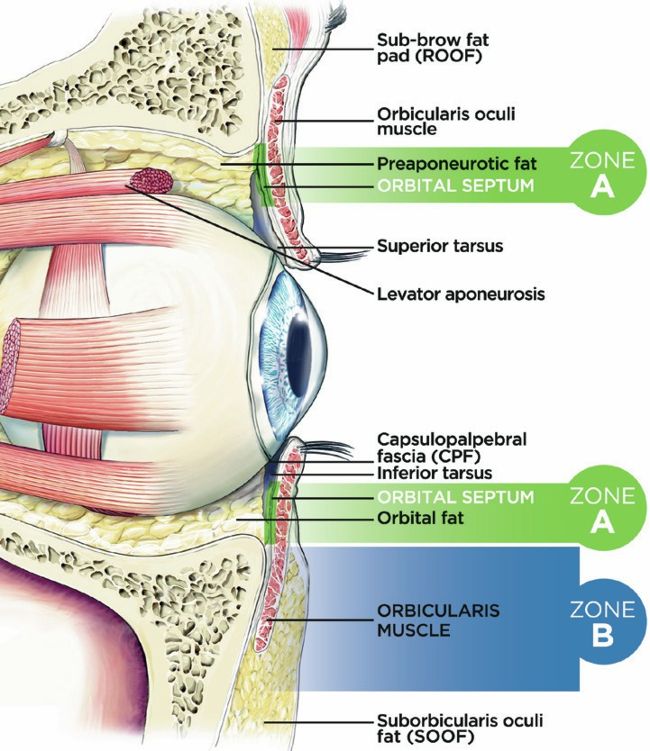
Figure 2
RESULTS
Figures 3-5 show my patient at baseline and two months after treatment to her tear troughs with Redensity 2 hyaluronic acid filler. She was treated with 0.4mls per side. Figures 6-8 are her comparison shots of two months after filler to address the hollowness, versus two weeks after four sessions of Sunekos 200 to address the dark circles.
My patient’s four sessions were carried out at intervals of between 10-15 days. Figures 9-11 show her before any treatment and her pictures taken 14 days after her fourth session of Sunekos 200.
Her hollowing and pigmentation were expected to improve further after treating the area with Sunekos 200, as new ECM was formed to give extra thickness to the skin, reduce transparency, increase firmness and elasticity.
Six months on, the patient reports she can still see a noticeable benefit to her undereye pigmentation and hollowing but, as expected, the effects have recently started to reduce so she has booked in for a repeat course of Sunekos 200.
It is advised that practitioners undergo specific advanced training prior to offering this treatment.
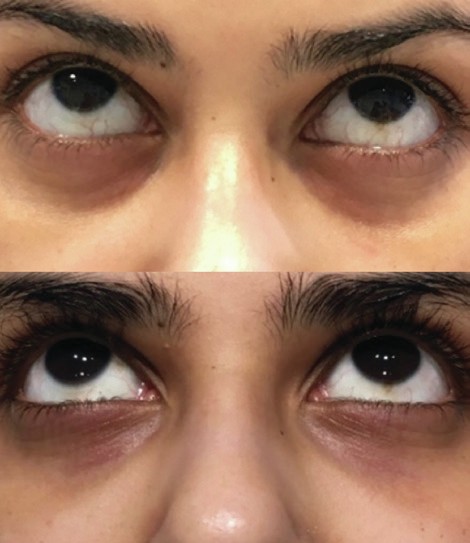
Figure 3

Figure 6
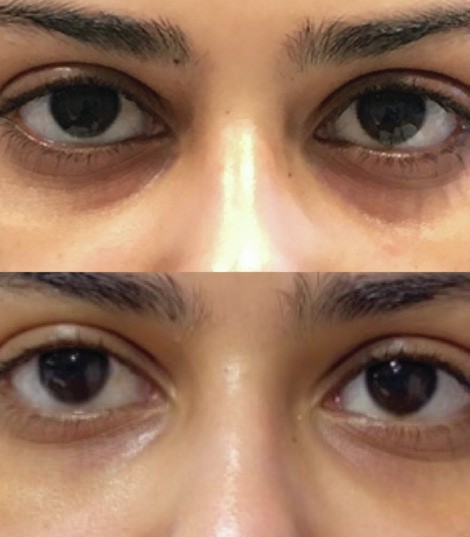
Figure 9
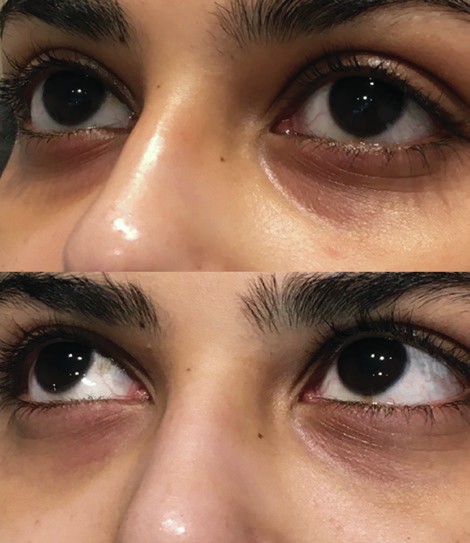
Figure 4
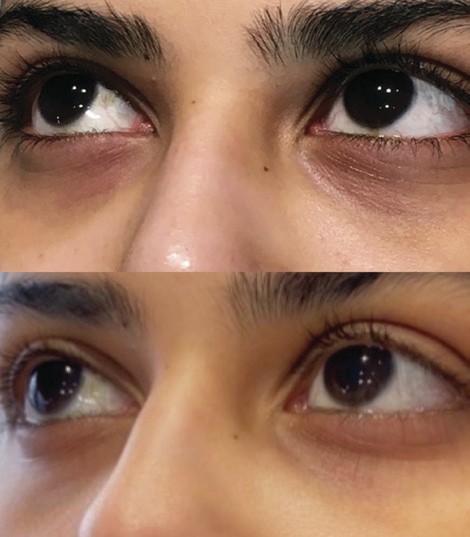
Figure 7
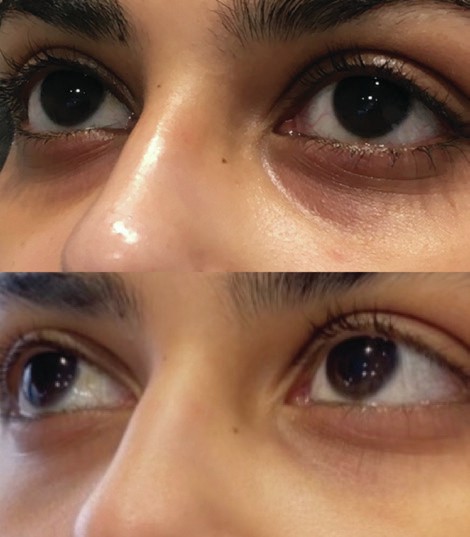
Figure 10
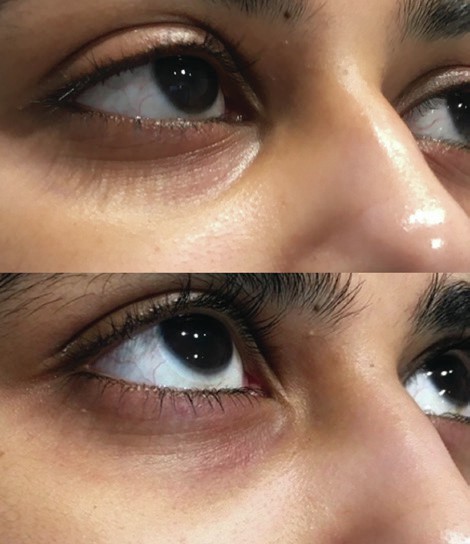
Figure 5
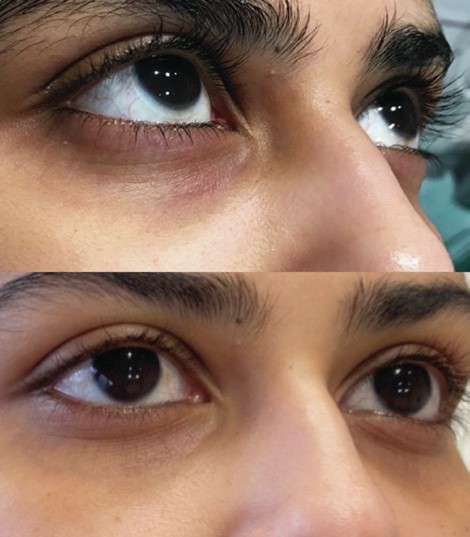
Figure 8
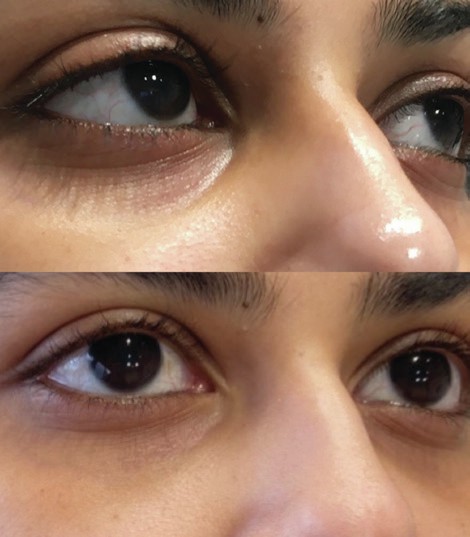
Figure 11
ABOUT SUNEKOS
Consisting of a specific, patented combination of hyaluronic acid and amino acids, Sunekos 200 aims to generate a new extracellular matrix (ECM) through the production of new collagen and elastin. It contains hyaluronic acid 200kDa, which acts on specific receptors present on the cell membrane to potentiate fibroblast activity.
To promote the production of fibrous proteins, there needs to be specific amino acids present – think of them as the right fuel or nutrients which the fibroblasts need in order to produce new collagen and elastin.
Sunekos 200 comes in a box consisting of two parts; a small glass vial of the amino acids Glycine, L-Proline, L-Lysine, L-Alanine, L-Valine and L-Leucine, which are in a powder form, and a vial containing sodium hyaluronate (30mg in 3mls of distilled water).
The non-cross linked, low molecular weight hyaluronic acid is mixed into the vial containing the amino acids and injected into the face or body. This then promotes new collagen and elastin formation through activating fibroblast activity in the injected area.
Study data has shown that Sunekos reduces the appearance of lines and wrinkles, improves skin hydration, smoothness, brightness and suppleness as well as improving cheek volume and the facial silhouette through having a plumping and lifting effect. 1,2
REFERENCES
1. Sparavigna A, Orlandini A, “Efficacy and Tolerance of an Injectable Medical Device Containing Hyaluronic Acid and Amino Acids: A Monocentric Six-Month Open-Label Evaluation’, Journal of Clinical Trials, (2017), 7:316.
2. Sunekos Injection Techniques
DR RITA NANDI
Dr Rita Nandi is a cosmetic doctor and GP with 15 years’ experience. She currently practices medical aesthetics and cosmetic dermatology at The Bloom Clinic, Canary Wharf, London and at three of DestinationSkin’s clinics. She has completed her Cosmetic Dermatology certificate at Harley Academy and is currently studying for their Level 7 Diploma in Injectables.